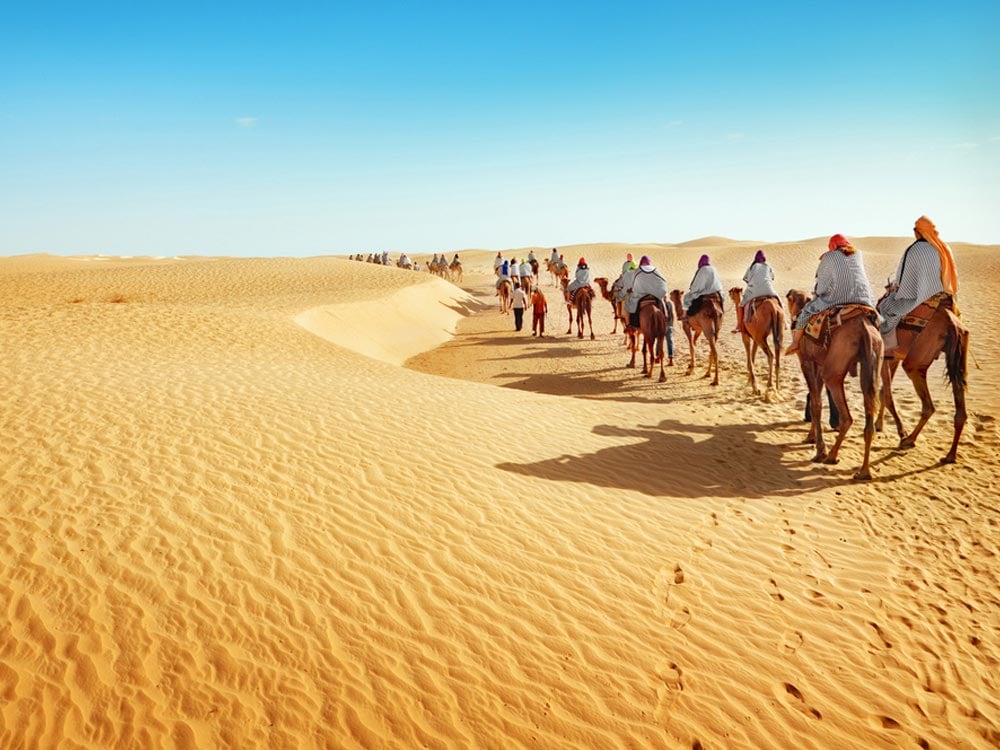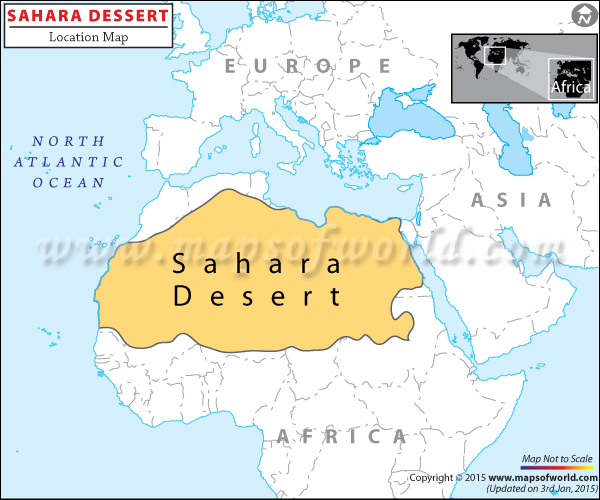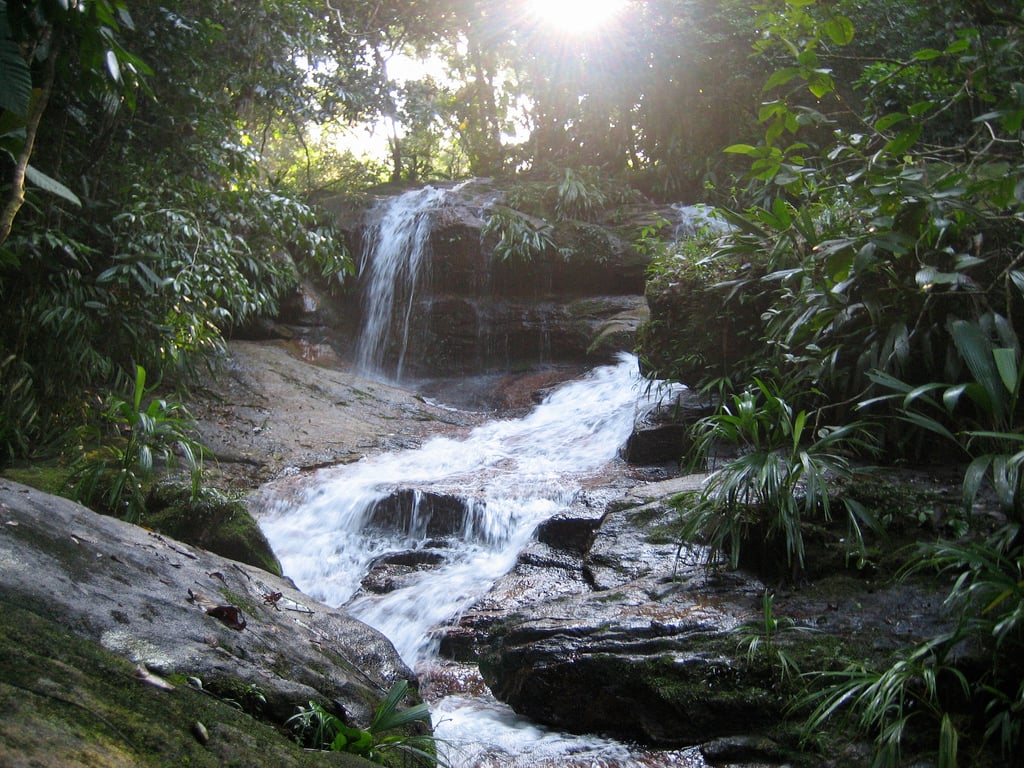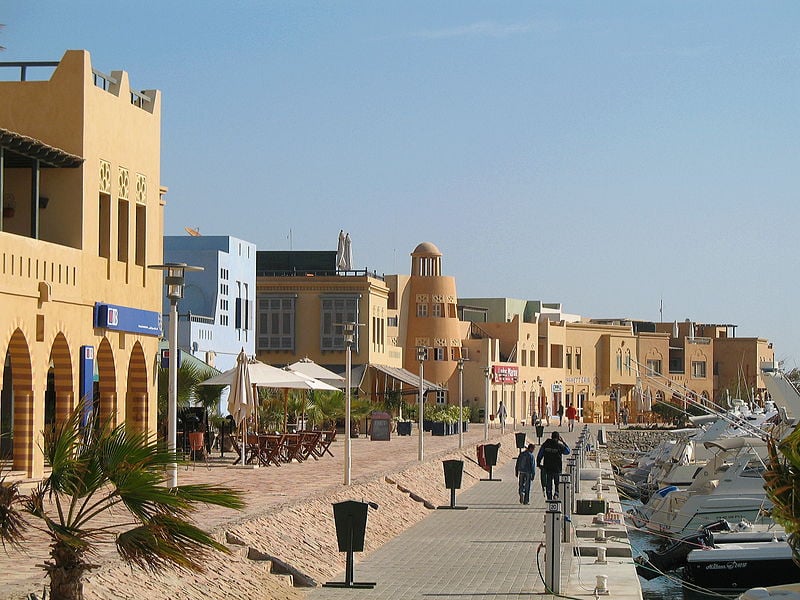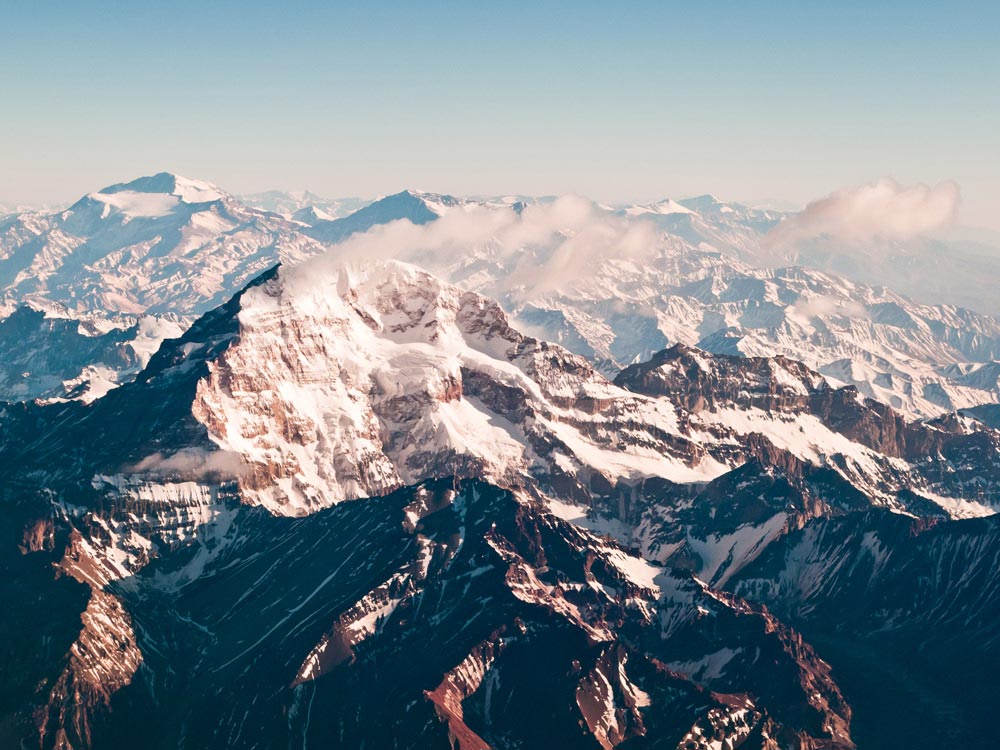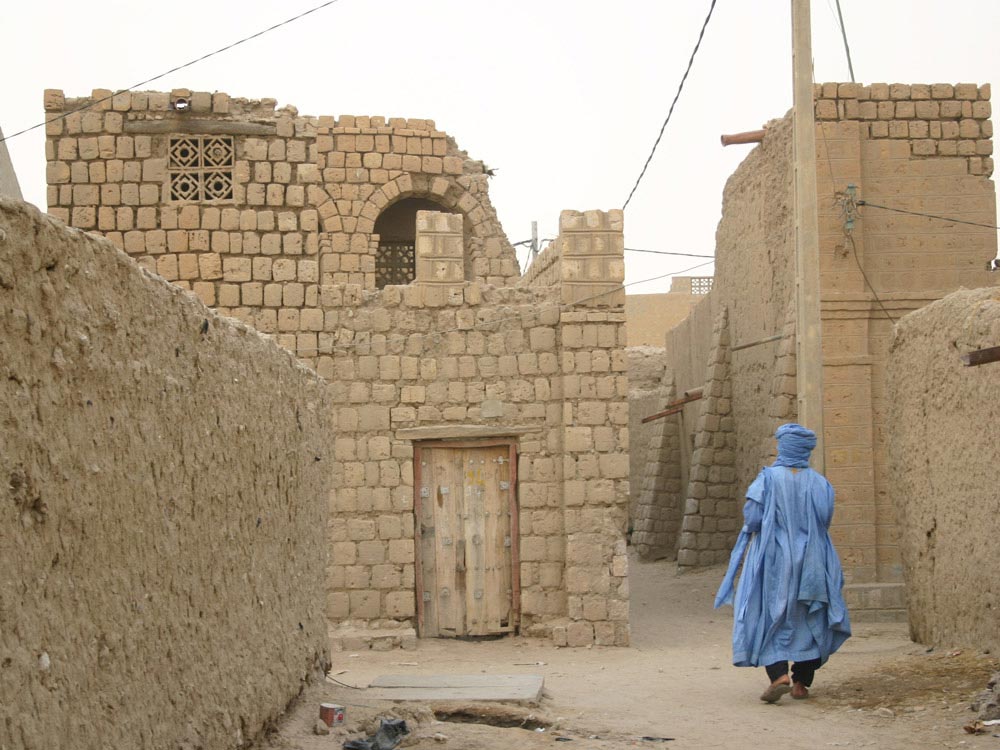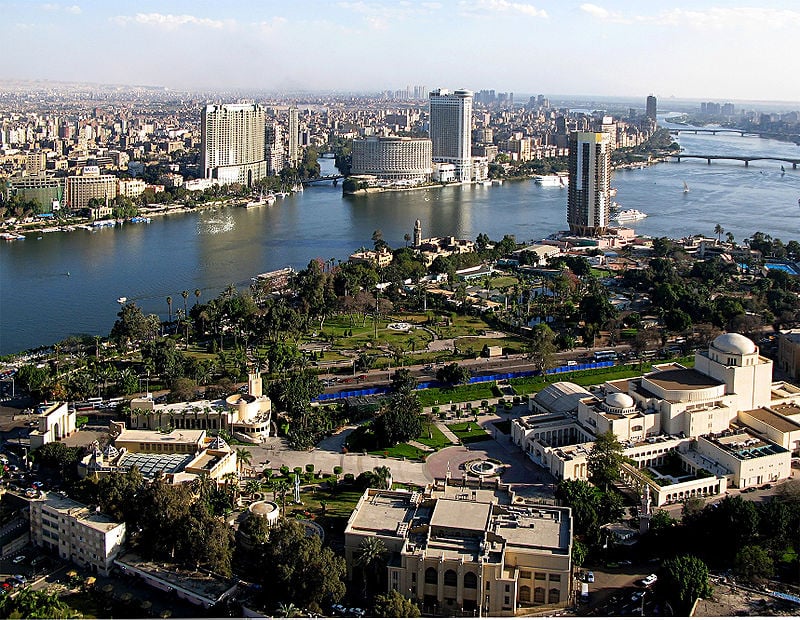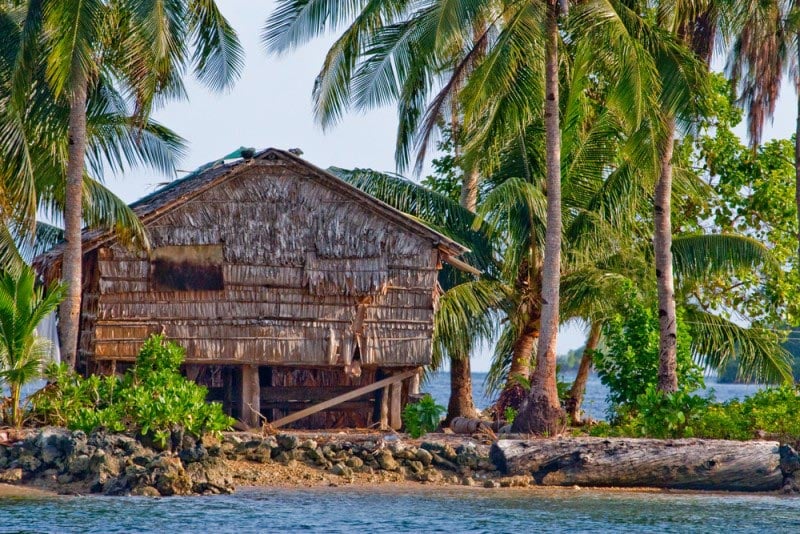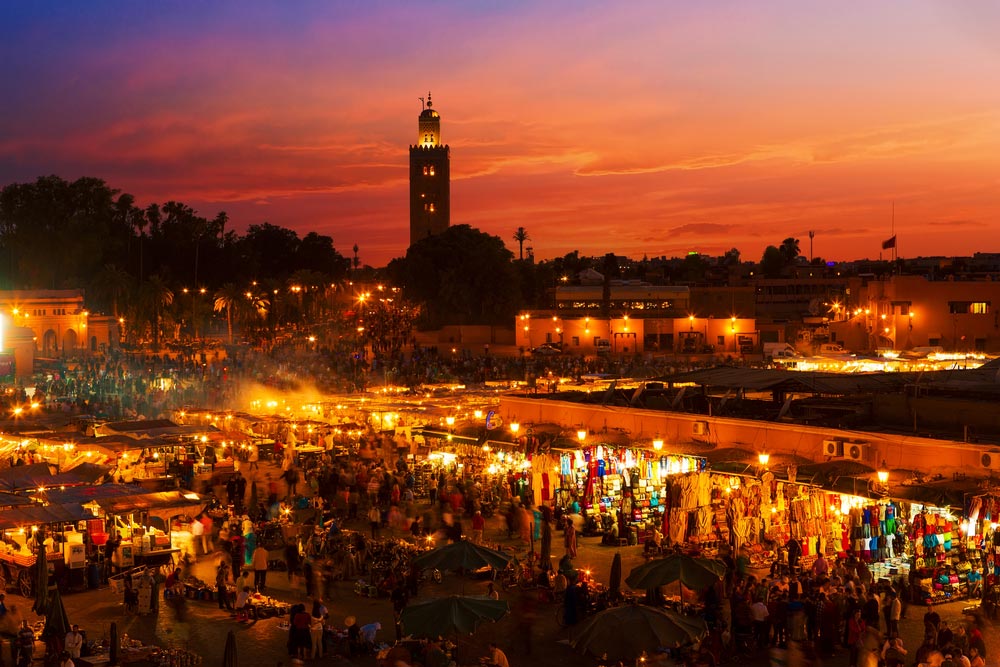“All sunshine makes the desert” says an Arabic proverb. Sahara Desert is a natural oven of biblical proportions in which every oasis is a refuge for intrepid travelers. From the coast of Casablanca to the Nile delta in Cairo, the transgressing sheet of sand fades out into infinity. In this fount of solitude where sand is as orange as it gets, the only god is water and night is the only deliverance. This uncharitable land, which is roughly as big as the United States, evokes an irresistible sense of antiquity and mystery.
History
The desert began to form as the land eroded after the water evaporated in the late Ice Age about 100,000 years ago. The fringes of the desert were inhabited by early human civilizations. The extensive rock art of Palaeolithic period, which stretches back at least 10,000 years, shows that nomadic tribes like Berber, Tuareg, and Bedouin have called this area home. Over the years, their culture and traditions evolved as they interacted with the Greeks, Romans, Egyptians, Vandals, Arabs, and most recently Europeans.
Things to Do in Sahara Desert
Contrary to popular notion, only about 25 percent of its area is blanketed with sand. Thus, activities in this otherworldly landscape can be as varied as the desert itself.
Camel Safaris – Since our salad days, most of us dream of sitting on a camel, be it on the Atlas Mountains or in the Nile River Valley. Hop on the flat hump of a ‘ship of the desert’ and slowly march into the Saharan countryside. This soulful journey on the dromedary camel – recalling the magic of ancient caravans – takes you to hidden lush palm groves or across dynamic sand dunes. When you’ve rejoiced with camel treks, camp out under the stars and sleep amidst pensive silence in a nomadic oasis.
Desert Safaris – Egypt, Morocco, and Algeria are the most popular bases for desert dwellers to go on safaris among. Take day trips or an overnight excursion in 4x4s to capture the essence of this barren land. If you don’t mind sand in your shoes – or sometimes in all the cavities – trekking, camping, quad biking, and sandboarding are other popular adventure activities in the Sahara Desert.
Hot Air Balloon Safaris – Only way you don’t feel inferior is perhaps when you rise above the vastness of the desert. Watch the sunrise over a landscape with no skyline while having your breakfast and witness the sun, sand, and sky painting nature’s palette in the evening.
River Cruises – To escape the scorching heat and sand or just to explore a hidden necropolis, set sail on a felucca (traditional wooden boat) and let temples, tombs, and islands pass by at a snail’s pace along the Nile River. In Chad, board a riverboat to a fishing village of Fulani tribe in the delta of the Niger River.
Cultural Interactions – Traipse back down the sand dunes into quaint kasbahs and hamlets – away from the shackles of society – of nomadic people and spend a day or more experiencing their minimal way of life. While you’re out there, visit the remnants of ancient cultures and evocative filming locations of Lawrence of Arabia in Morocco, The Mummy series in Egypt, and Star Wars saga, Indiana Jones series, and The English Patient in Tunisia. Enjoy oriental musical dance shows or wander about the labyrinthine alleyways of larger exotic towns to shop for souvenirs in the crowded souks like DJemaa el-Fnaa and Khan el-Khalili.
World Heritage Sites – There are almost 30 UNESCO World Heritage Sites in the Sahara Desert. Some of the most famous destinations that make an elite portfolio of Saharan attractions are: Giza Necropolis and Valley of the Kings in Egypt, Tassili n’Ajjer in Algeria, Rock-Art Sites of Tadrart Acacus in Libya, Archaeological Sites of the Island of Meroe in Sudan, Ksar of Aït Benhaddou in Morocco, Ancient Ksour of Ouadane in Mauritania, Lakes of Ounianga in Chad, Timbuktu in Mali, and Roman ruins in Tunisia.
Other Attractions – A safari into the desert can’t be complete without visiting the prehistoric rock paintings. From Tibesti to Hoggar Mountains, it’s an open-air museum harboring up to 3,000 archaeological sites in Africa. Cave of Swimmers, Cave of Beasts, Tassili n’Ajjer, rock art of Figuig, and Wadi Al-Hitan are prominent sites for history buffs.
Wildlife Viewing – The Saharan flora comprises 2800 vascular plants species — one quarter of these are endemic. The Saharan fauna includes 70 species of mammals, 90 kinds of birds, and 100 reptile species. Guelta d’Archei – the most renowned guelta in the Sahara – is where crocodiles and camels are found in abundance. Jerboa, Sidewinder rattlesnake, Dorcas Gazelle, Ostrich, and Fennec Fox are incredibly adaptive Sahara desert animals. Most wildlife is concentrated primarily in the less severe northern and southern margins.
Nearby Attractions
Emi Koussi, Nile River, Atlas Mountains, Tassili N’Ajjer National Park, and Lake Chad.
Sahara Desert Map
Sahara Desert Location
The desert spills over much of the land found within northern Africa excluding some areas: the Mediterranean and Atlantic coastline, the Atlas Mountains, and the Nile Valley in Egypt and Sudan. Sahara covers nearly all of Egypt, Libya, Mauritania, Western Sahara, Algeria, and Niger. It touches southern Tunisia and Morocco and spreads into northern Mali, Chad, and Sudan.
How to Reach?
By Air – International airports in Cairo and Luxor in Egypt, Marrakech and Casablanca in Morocco, Algiers in Algeria, Khartoum in Sudan, and Tripoli in Libya act as major gateways to the desert.
By Road – In northern and southern Sahara, there are paved roads with limited public transportation. However, in central Sahara no reliable medium of transportation is present. It is best to rent a car for a few days from the nearest city.
Accommodations
Decent hotels can be found in almost every other oases or town, although some of them can be expensive. Luxury is an illusion in remote reaches as the tourist infrastructure is practically non-existent. The best way to stay is to raise a tent for the night in an appropriate campsite. For a rendezvous with luxury, head to cities like Cairo, Algiers, Marrakech, Tripoli, Tamanrasset, Agadez, Faya-Largeau, and Nouakchott.
Restaurants
Berber and Tuareg cuisines differ from one region to another within the desert. Taste the traditional dishes – Pastilla, Couscous, and Tajine – of the nomadic tribes. While Algerian cuisine is a delectable fusion of Berber, Mediterranean, and Ottoman food, the succulent Moroccan and Egyptian cuisines are influenced by exchanges with Arabic and European cultures.
Best Time to Visit
The sandscape witnesses one of the most severe climates with negligible rainfall and capricious winds. Best time to go on safaris in the desert is when daytime temperatures are bearable – between October and April or early May. In the depths of Saharan winter (during December and January), night temperature usually falls below freezing point in northern Sahara.
Facts about Sahara Desert
- The word ‘Sahara’ in Arabic language translates as ‘desert.’
- It has an overall surface area of more than 3.5 million square miles (9,400,000 sq. km.). The hyper-arid center of the Sahara is spread over 1.7 million square miles.
- Covering nearly 25% of Africa, it is the largest hot desert and third largest desert in the world.
- While most of the Sahara consists of rocky plateaus, many of its sand dunes reach almost 180 meters (590 ft.) in height.
- With a height of 3,445 meters, Emi Koussi (in Chad) is the tallest peak in the desert. The Qattera Depression (in Egypt), the lowest point in Sahara, lies at 133 meters below sea level at the deepest point.
- Only two permanent rivers flow through the desert: the Nile River and the Niger River. Around twenty lakes are found in the Sahara as well.
- Ténéré Tree, in northern Niger, was believed to be the most isolated tree in world until in 1973 when a drunk driver crashed into it
- In Morocco, a 156-mile-long ultramarathon called Marathon des Sables (MDS) is considered toughest foot race on earth.
Things to Remember
- Hire an experienced guide or book a reliable tour operator for desert safaris.
- Pack lightly while going on multiple day expeditions.
- Don’t forget to carry high SPF sunscreen, short-wave radio, first-aid kit, hat, and supplies for fuel and camping.
- Drink enough water to stay hydrated and take rest if you experience heat exhaustion.
- Check on updates before entering the politically unstable regions of the desert.
- In case of any emergency, build a fire to make a signal.
Related Maps
